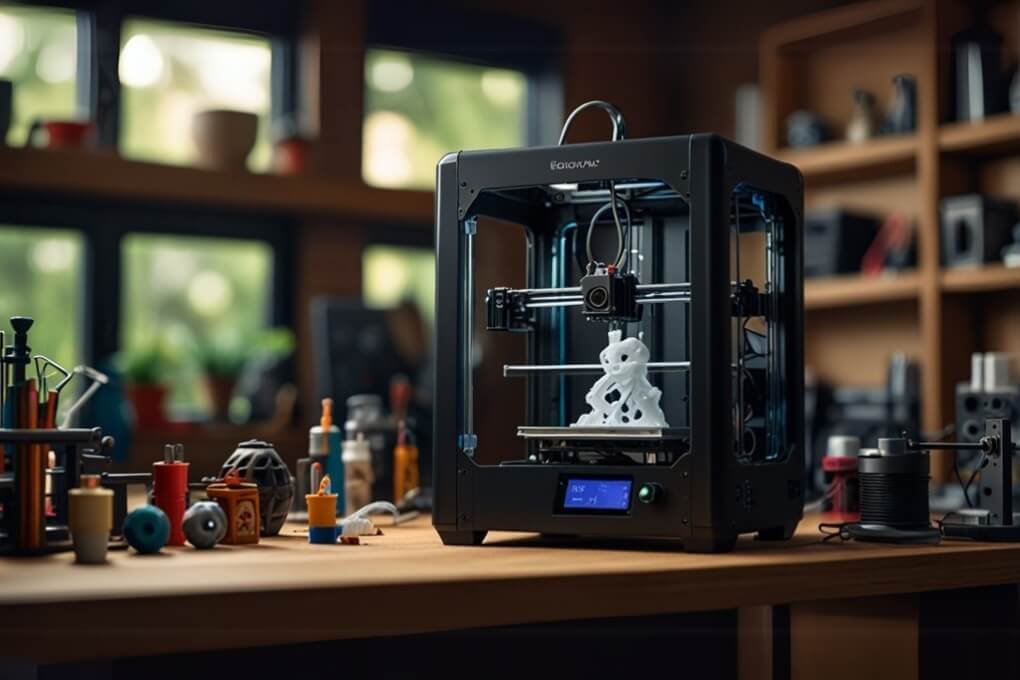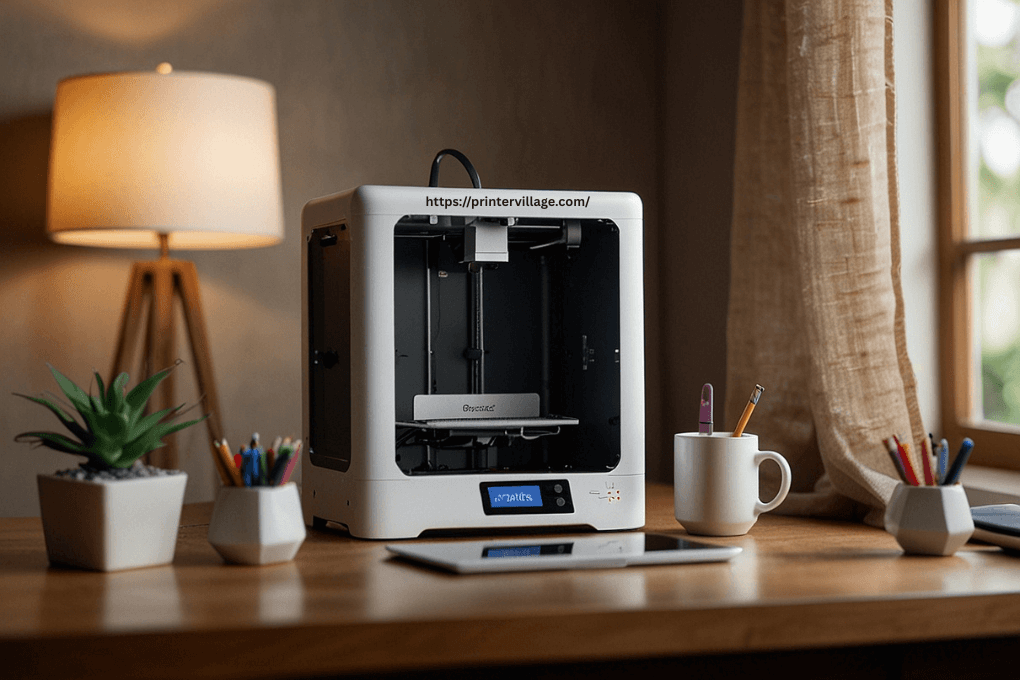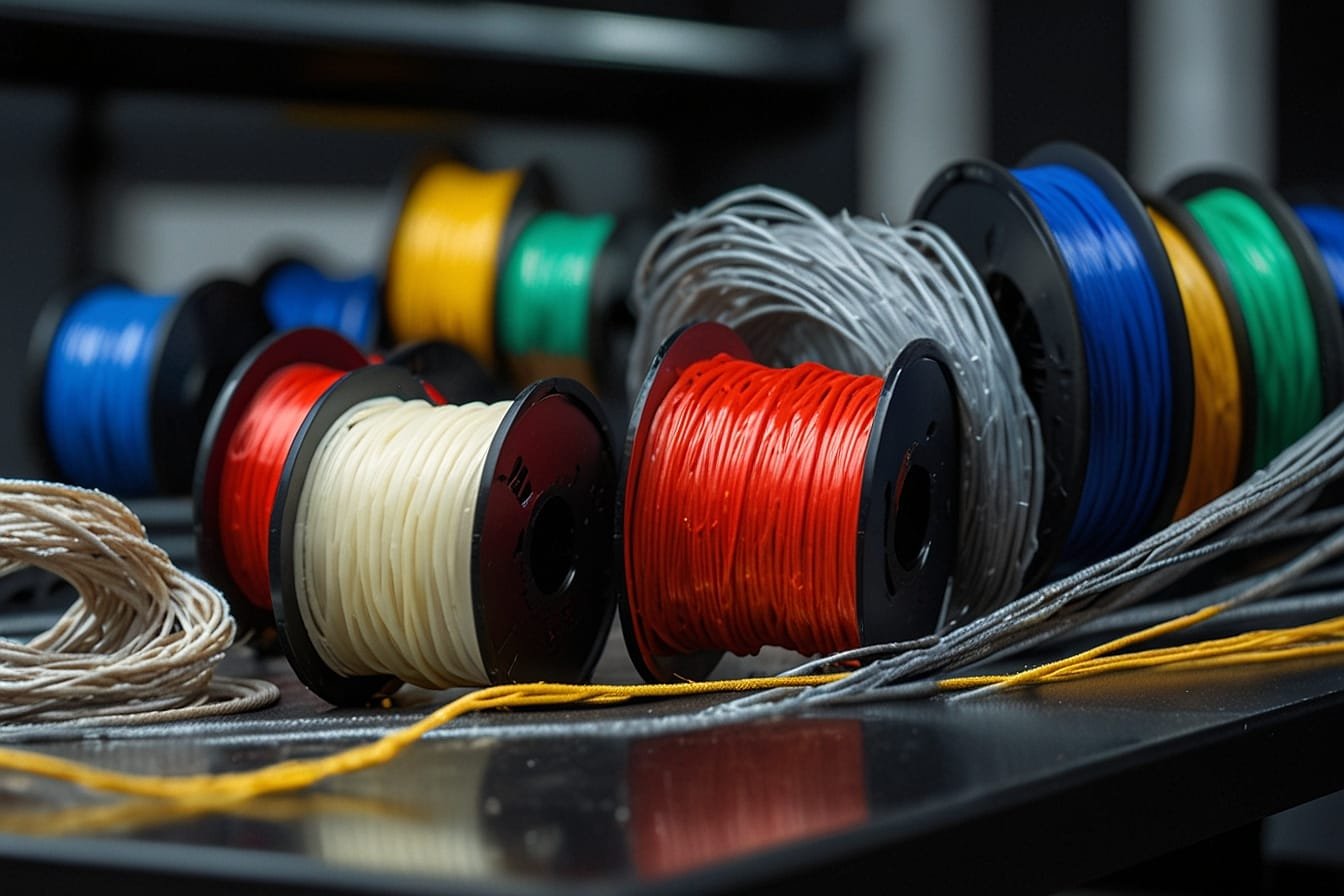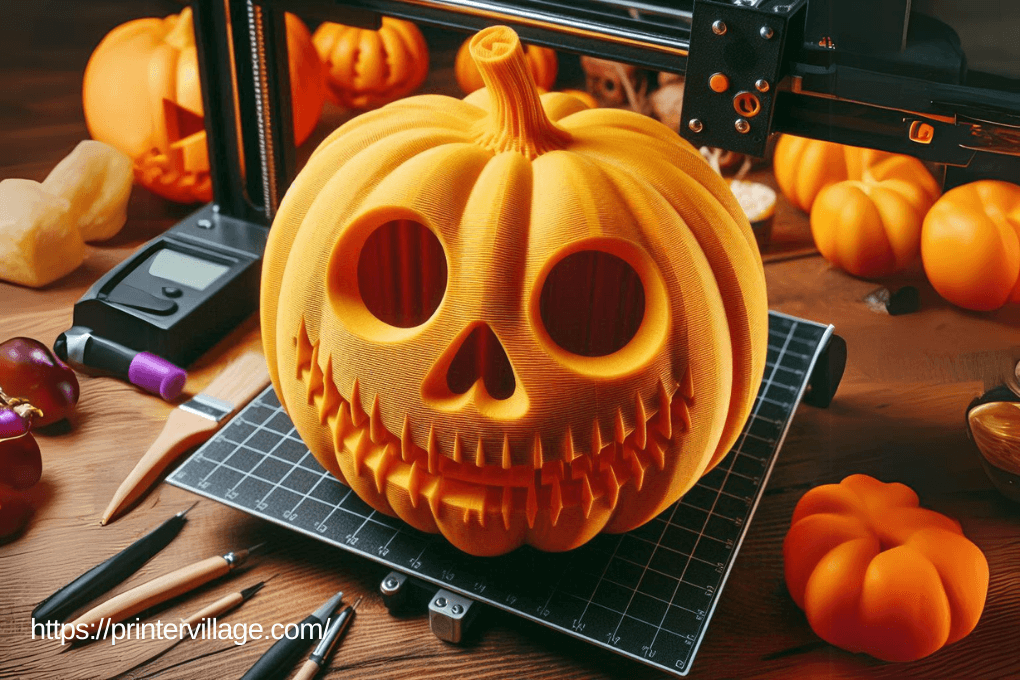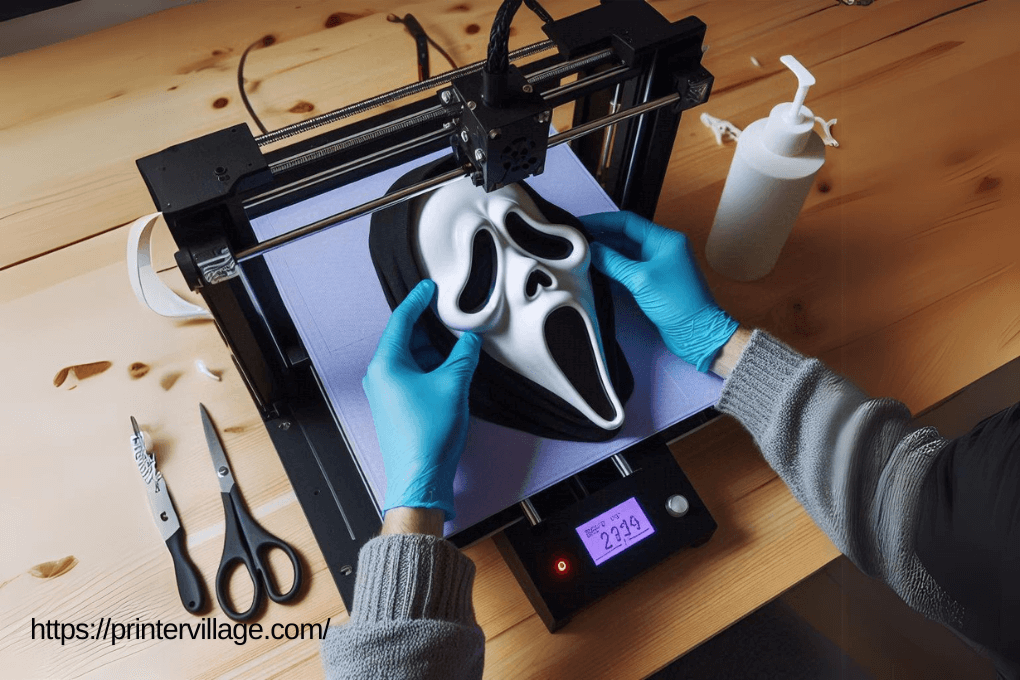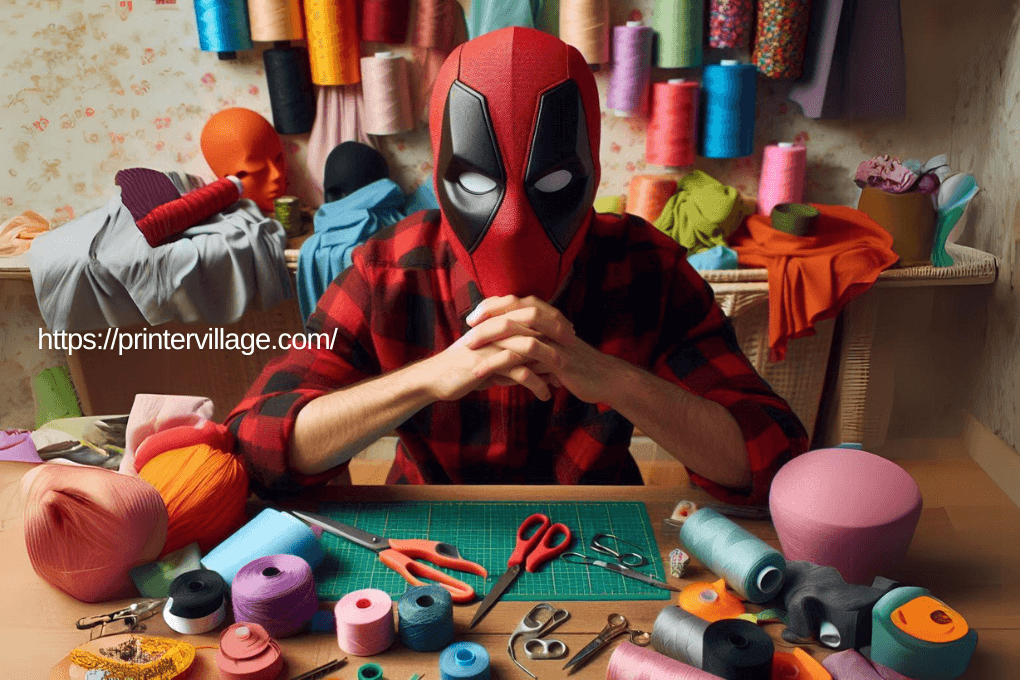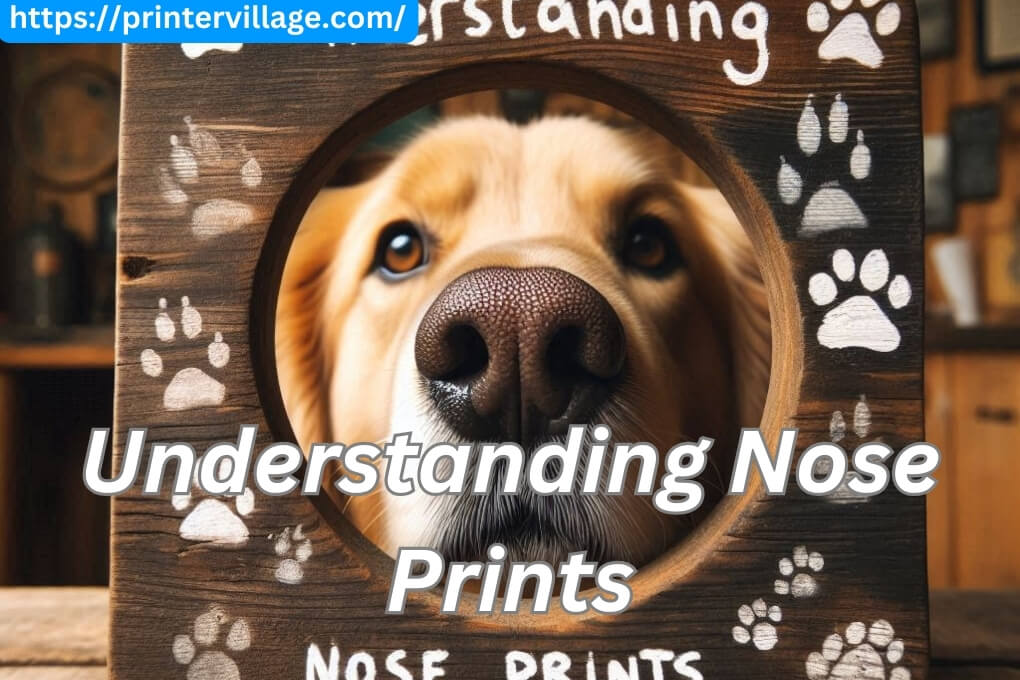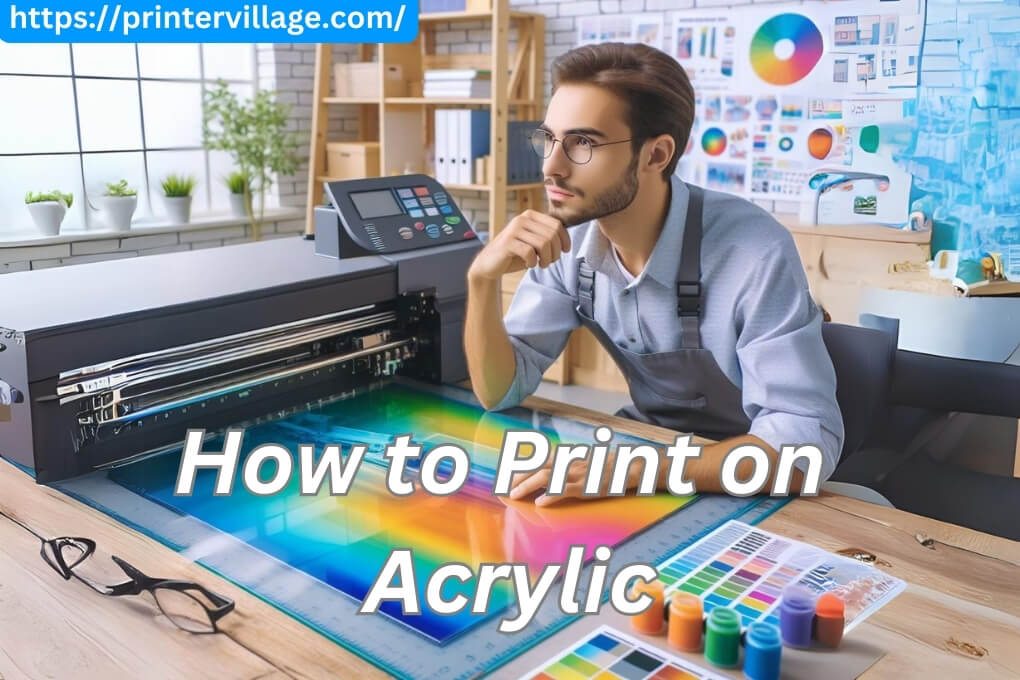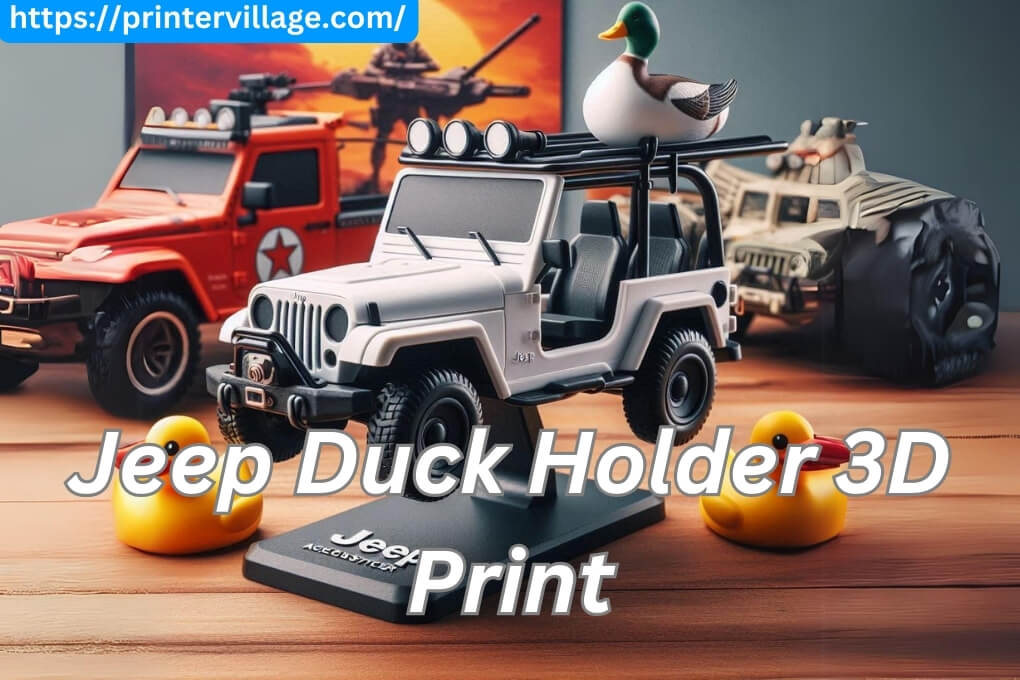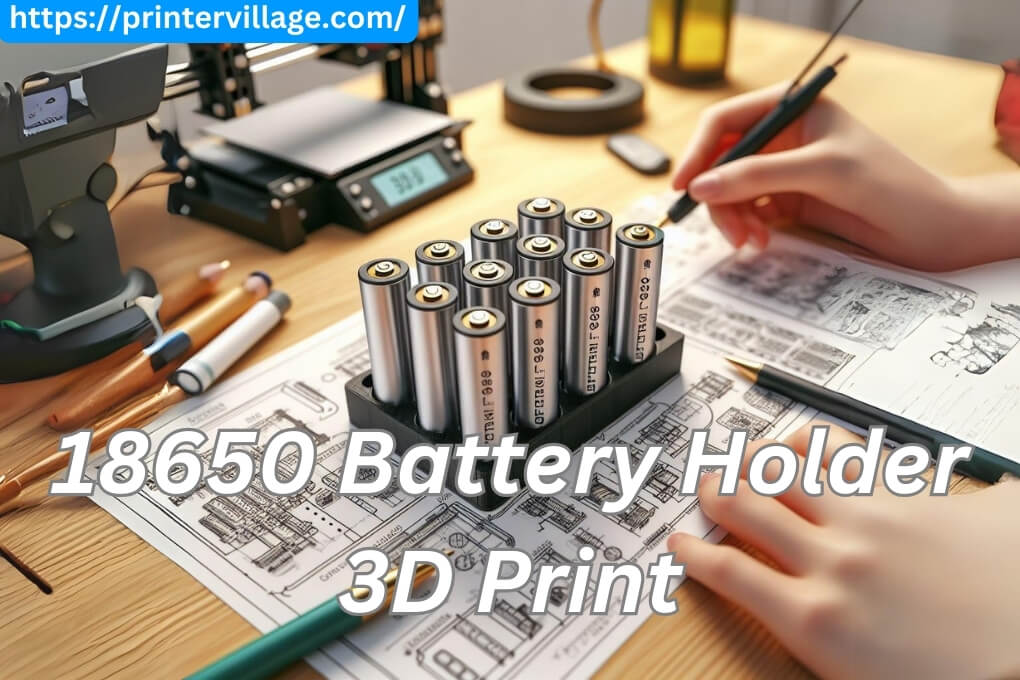The Revolution in Your Workshop: Why 3D Printing Captivates Hobbyists
Welcome to the thrilling and ever-evolving world of 3D printing! Once a technology confined to industrial prototyping and high-end research labs, 3D printing has dramatically democratized, placing the power of manufacturing directly into the hands of hobbyists, makers, artists, and tinkerers.
If you’re reading this, you’re likely on the cusp of discovering just how transformative this technology can be. The allure is undeniable: the ability to conceive an idea, design it (or download a design), and then watch it materialize layer by layer is a modern marvel.
For hobbyists, 3D printing opens up a universe of possibilities. It’s more than just a gadget; it’s a tool for creation, problem-solving, learning, and personalization. Whether you dream of printing custom D&D miniatures, designing bespoke phone cases, fabricating replacement parts for household items, or crafting unique art pieces, a 3D printer can be your gateway.
But with this explosion in accessibility comes a bewildering array of choices. Figuring out “what is the best 3D printer for hobbyists” can feel like navigating a complex maze.
This comprehensive guide is designed to be your compass. We’ll delve deep into the crucial factors to consider, explore the dominant printer technologies in detail, examine essential software and accessories, and, most importantly, highlight some of the top-performing and best-value 3D printers currently available for hobbyists in 2025.
Our goal is to equip you with the knowledge to make an informed decision and embark on your 3D printing journey with confidence.
Before we dive into printer specifics, let’s solidify why 3D printing is such a compelling hobby:
- Unleashing Boundless Creativity: Go beyond off-the-shelf solutions. If you can imagine it, you can often design and print it. From intricate cosplay props to functional engineering prototypes, your creativity is the only limit.
- Practical Problem-Solving: A broken plastic clip on an appliance? Need a custom jig for a woodworking project? A 3D printer allows you to design and produce solutions tailored to your exact needs, often saving time and money.
- A Gateway to New Skills: Engaging with 3D printing inherently involves learning. You might pick up skills in 3D modeling (CAD – Computer-Aided Design), understand basic mechanical principles, dabble in electronics (if you upgrade or repair your printer), and hone your troubleshooting abilities.
- Unparalleled Personalization: Create truly unique gifts, personalize everyday objects, or tailor items to specific ergonomic needs. The level of customization is unprecedented.
- Joining a Vibrant Community: The 3D printing community is vast, passionate, and incredibly supportive. Online forums, social media groups, and model repositories are brimming with shared knowledge, free designs, and collaborative projects.
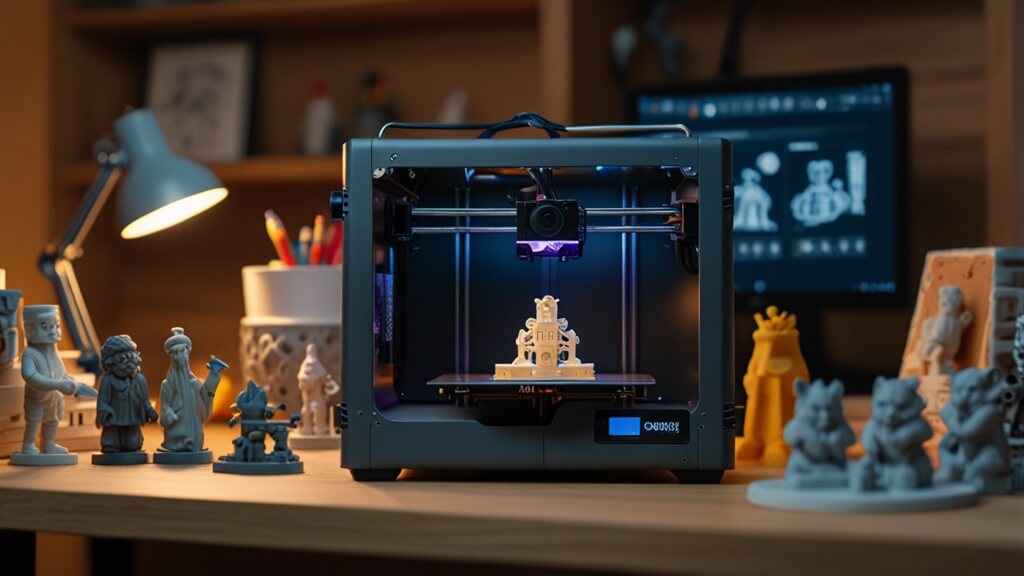
Key Factors: Choosing Your Ideal Hobbyist 3D Printer
The “best” 3D printer is not a one-size-fits-all answer. It heavily depends on your individual aspirations, technical comfort level, available space, and, crucially, your budget.
Let’s break down the core considerations:
1/ Printer Technology: FDM vs. Resin – Understanding the Core Difference
This is the most fundamental choice you’ll make. The two dominant technologies for hobbyist 3D printers are Fused Deposition Modeling (FDM) and Resin (typically MSLA – Masked Stereolithography).
- FDM (Fused Deposition Modeling):
- How it works: FDM printers work by melting a thermoplastic filament and extruding it through a heated nozzle, depositing the molten plastic layer by layer onto a build platform until the object is complete. Think of it as a highly precise, robotic hot glue gun.
- Common Filaments:
- PLA (Polylactic Acid): The most popular beginner-friendly filament. It’s biodegradable (under industrial composting conditions), easy to print with, has minimal warping, and comes in a vast array of colors and finishes. Ideal for decorative items, prototypes, and general hobbyist prints.
- PETG (Polyethylene Terephthalate Glycol): More durable and temperature-resistant than PLA. It’s also food-safe (though prints themselves might not be due to layer lines harboring bacteria). Good for functional parts that need some strength and flexibility. Can be a bit stringier to print than PLA.
- ABS (Acrylonitrile Butadiene Styrene): Strong, impact-resistant, and can withstand higher temperatures. The same plastic LEGO bricks are made from. However, it’s prone to warping and requires a heated bed and often an enclosure to print successfully. It also emits potentially harmful fumes (VOCs), requiring good ventilation.
- TPU (Thermoplastic Polyurethane): A flexible, rubber-like filament. Great for printing phone cases, vibration dampeners, or parts that need to bend. Can be challenging to print, especially on Bowden-style extruders.
- Others: ASA (UV resistant ABS alternative), Nylon (very strong, requires high temperatures), Polycarbonate (extremely strong), wood-fill, metal-fill, carbon-fiber-fill (these are PLA/PETG mixed with particles for aesthetic or minor strength improvements, often abrasive to standard nozzles).
- Pros: Generally more affordable, wider range of materials with varying properties, larger build volumes are common, materials are cheaper, easier setup and maintenance, less messy post-processing.
- Cons: Visible layer lines are common (though can be minimized with settings), not as capable of producing ultra-fine details or perfectly smooth surfaces as resin printers.
- Resin (SLA/DLP/MSLA):
- How it works: Resin printers use a UV light source (typically an LCD screen for MSLA printers, which are most common for hobbyists) to selectively cure layers of photopolymer resin in a vat. The build platform lifts incrementally out of the resin vat as each layer is cured.
- Common Resin Types:
- Standard Resin: Good for general-purpose printing, offering a balance of detail and strength. Available in various colors.
- Tough/ABS-Like Resin: Engineered for higher impact resistance and durability, mimicking the properties of ABS plastic.
- Flexible Resin: Produces rubbery, bendable parts.
- Castable Resin: Designed for investment casting, burning out cleanly to create molds for jewelry or metal parts.
- Water-Washable Resin: Can be cleaned with water instead of isopropyl alcohol, simplifying post-processing (though the contaminated water still needs careful disposal).
- Pros: Exceptional detail, smooth surfaces, ideal for intricate models like miniatures, jewelry, dental models, and artistic sculptures where fine features are paramount.
- Cons: Typically smaller build volumes, resin is messy and toxic (requires gloves and eye protection), emits strong fumes requiring excellent ventilation and often a respirator, post-processing is mandatory and involves washing prints in isopropyl alcohol (IPA) or a specialized cleaner, followed by UV curing. Resins are generally more expensive than FDM filaments. The LCD screens are consumables with a limited lifespan.
- Recommendation for most hobbyists, especially beginners: Start with an FDM printer. It’s more forgiving, versatile in terms of materials for general use, and typically has a lower barrier to entry regarding cost and setup complexity. If your primary goal is to print extremely detailed miniatures or jewelry, then a resin printer might be your first choice, but be prepared for the steeper learning curve and safety precautions.
2/ Your Budget: From Entry-Level to Prosumer Hobbyist
Hobbyist 3D printers can range from under $200 to well over $1000. Consider not just the upfront cost of the printer, but also ongoing costs for filament/resin, spare parts (nozzles, build surfaces), and potential upgrades.
- Entry-Level ($150 – $300): These printers are fantastic for getting your feet wet without a major investment. They can produce surprisingly good prints but may require more manual calibration, assembly, and tinkering. Features like auto-bed leveling are less common here but are starting to appear (e.g., Creality Ender 3 V3 SE).
- Mid-Range ($300 – $600): This is often the “sweet spot” for many hobbyists. Printers in this range usually offer a good balance of features (like auto-bed leveling, direct drive extruders, quieter stepper motor drivers), improved reliability, better build quality, and larger build volumes.
- High-End Hobbyist / Prosumer ($600 – $1200+): These printers typically come with more advanced features out-of-the-box, such as high-speed printing capabilities, multi-material printing options, sophisticated auto-calibration systems, robust construction, and often a more polished user experience. Brands like Prusa and Bambu Lab shine here.
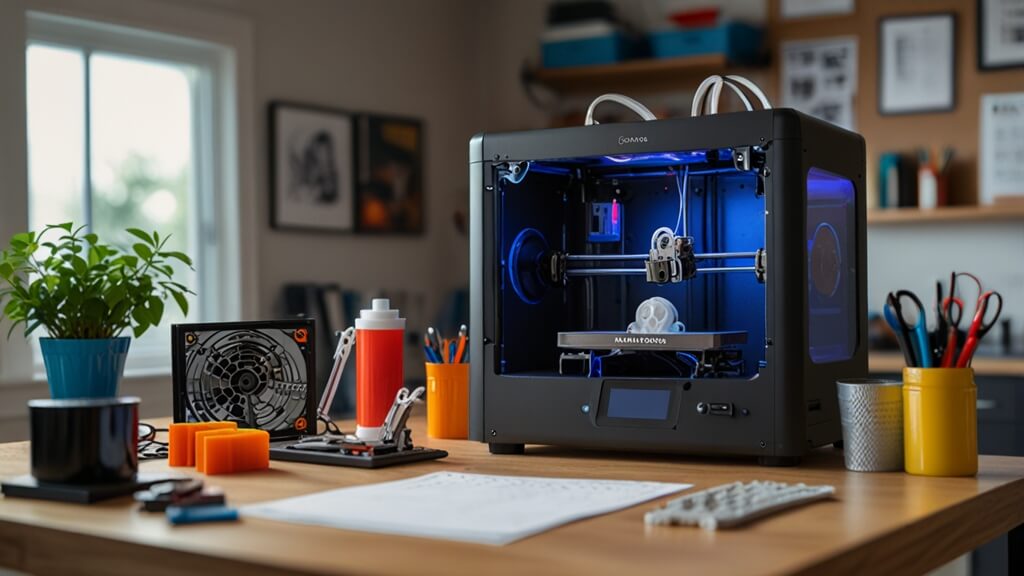
3/ Ease of Use, Assembly, and User Interface
- Assembly:
- Kits: Require full assembly from individual components. A great learning experience but can be time-consuming and frustrating if you’re not mechanically inclined.
- Semi-Assembled: The most common format. Major components are pre-assembled, and you’ll typically need 30-90 minutes to put it together.
- Fully Assembled: Ready to use almost out of the box, requiring minimal setup. Most resin printers and some higher-end FDM printers come this way.
- Bed Leveling: This is crucial for getting a good first layer, which is the foundation of a successful print.
- Manual Leveling: Involves manually adjusting knobs under the print bed while using a piece of paper or a feeler gauge to set the nozzle height. Can be tricky for beginners.
- Assisted Manual Leveling: The printer guides you through the manual process.
- Auto-Bed Leveling (ABL): Uses a sensor (e.g., BLTouch, CR-Touch, inductive probe) to measure points on the bed and create a mesh, allowing the printer to compensate for an uneven surface. A highly desirable feature.
- User Interface (UI): How you interact with the printer.
- Knob-Controlled LCD: Basic but functional.
- Color Touchscreen: More intuitive and user-friendly.
- Web Interface/App Control: Allows remote monitoring and control, common on newer, more advanced printers.
- Slicer Software: This software “slices” your 3D model into individual layers and generates G-code (the instructions the printer follows). Popular free slicers include Ultimaker Cura, PrusaSlicer, and OrcaSlicer. Bambu Studio is specific to Bambu Lab printers but is also excellent. They offer a vast array of settings to fine-tune print quality, speed, and strength.
4/ Build Volume: How Big Can You Print?
This refers to the maximum dimensions (X, Y, Z axes) of an object your printer can create.
- Small (e.g., 120x120x120mm): Common for very budget FDM or many resin printers. Suitable for miniatures, small gadgets.
- Medium (e.g., 220x220x250mm): A very common and versatile size for hobbyist FDM printers. Can handle a wide range of projects.
- Large (e.g., 300x300x300mm or more): For printing larger single objects like cosplay helmets or bigger functional parts.
Consider what you realistically want to print. You can always print larger objects in multiple pieces and assemble them later.
5/ Print Quality & Reliability: Key Hardware Features
- Frame Construction: A rigid frame (e.g., aluminum extrusions) minimizes vibrations and improves print quality.
- Extruder Type:
- Bowden Extruder: The motor pushing the filament is mounted on the printer frame, making the print head lighter for potentially faster movement, but can struggle with flexible filaments and have more retraction issues.
- Direct Drive Extruder: The motor and extruder mechanism are mounted directly on the print head. Offers better filament control, especially for flexibles and faster retractions, but adds weight to the print head.
- Hotend: The part that melts the filament. All-metal hotends can reach higher temperatures for printing materials like Nylon or Polycarbonate.
- Print Bed Surface: PEI sheets (smooth or textured), glass, or magnetic flexible build plates are common. Good adhesion is key. Heated beds are standard on FDM printers and essential for materials like PETG and ABS.
- Motion System: Lead screws (especially dual Z-axis for stability), linear rods, or increasingly, linear rails contribute to precision.
- Stepper Motor Drivers: Quieter drivers (e.g., TMC2208, TMC2209) significantly reduce printer noise.
6/ Community, Support, and Ecosystem
- Community: A large, active online community (e.g., Reddit, Facebook groups, forums) is invaluable for troubleshooting, sharing mods, finding print settings, and getting advice. Brands like Creality and Prusa have massive communities.
- Manufacturer Support: Check for responsiveness, availability of spare parts, and warranty terms.
- Firmware: Open-source firmware (like Marlin) allows for extensive customization, while proprietary firmware might be more polished but less flexible. Regular updates are a good sign.
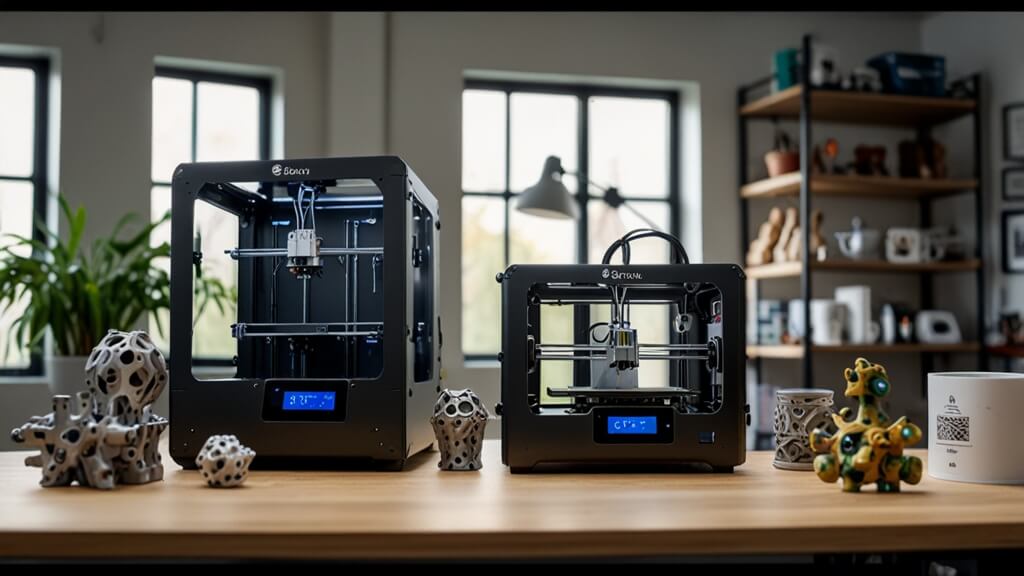
Top 3D Printer Recommendations for Hobbyists (Updated for 2025)
The 3D printer market is dynamic, with new models and revisions appearing frequently. These recommendations represent printers that consistently offer excellent value, performance, and community support for hobbyists.
1- Best Budget FDM Printers for Hobbyists (Sub-$300)
- Creality Ender 3 V3 SE:
- Why: The latest iteration in the legendary Ender 3 lineage. It brings modern features like CR-Touch auto-bed leveling, a direct drive “Sprite” extruder, and faster print speeds (up to 250mm/s) to an incredibly accessible price point. Excellent for beginners.
- Build Volume: 220 x 220 x 250 mm
- Pros: Very affordable, easy assembly, auto-bed leveling, direct drive, decent print speed for the price, huge community.
- Cons: The user interface is a bit basic (knob-controlled screen).
- Anycubic Kobra 2 Neo:
- Why: A strong competitor to the Ender 3 V3 SE, offering similar features like direct drive extrusion and LeviQ 2.0 auto-bed leveling. Often vies for the best value entry-level printer.
- Build Volume: 220 x 220 x 250 mm
- Pros: Competitive pricing, auto-bed leveling, direct drive, generally easy setup.
- Cons: The Community is smaller than Creality’s but growing steadily.
- Sovol SV06:
- Why: Often praised for its “Prusa Mini-like” design at a much lower cost. Features a planetary gear direct drive extruder, inductive auto-bed leveling, and dual Z-axis lead screws for stability.
- Build Volume: 220 x 220 x 250 mm
- Pros: Excellent value for its feature set, good print quality, capable direct drive.
- Cons: Brand is newer, so long-term support and community size are still developing.
2- Best Overall FDM Printers for Hobbyists (Mid-Range: $300 – $600)
- Creality Ender 3 V3 KE / Ender 3 S1 Pro:
- Why: The V3 KE is essentially a Klipper-ized Ender 3 V3 SE, offering much faster speeds (up to 500mm/s), a color touchscreen, and Wi-Fi connectivity. The S1 Pro remains a solid choice with its “Sprite” Pro all-metal direct drive extruder, CR-Touch, and dual Z-axis, good for higher-temp materials.
- Build Volume: (V3 KE & S1 Pro) 220 x 220 x 240/270 mm respectively
- Pros: (V3 KE) Very fast, modern features, Klipper firmware. (S1 Pro) Reliable, all-metal hotend, good material compatibility.
- Cons: Creality’s software ecosystem can sometimes be less polished than competitors.
- Bambu Lab A1 Mini (with AMS Lite option):
- Why: Bambu Lab has disrupted the market with its high-speed, high-quality, and user-friendly printers. The A1 Mini brings this innovation to a more affordable price point, featuring full auto-calibration (including bed leveling and vibration compensation), very fast printing, excellent print quality out of the box, and an optional multi-color printing system (AMS Lite).
- Build Volume: 180 x 180 x 180 mm
- Pros: Exceptionally fast, incredible print quality, revolutionary auto-calibration, optional easy multi-color printing, user-friendly.
- Cons: Smaller build volume, more proprietary components, cloud-dependent for some features (though LAN mode exists).
- Elegoo Neptune 4 / Neptune 4 Pro:
- Why: Elegoo has stepped up its game significantly with the Neptune 4 series, offering Klipper firmware pre-installed for high-speed printing (up to 500mm/s), auto-bed leveling, and direct drive extruders. The Pro version adds features like an all-metal hotend and improved cooling.
- Build Volume: 225 x 225 x 265 mm
- Pros: Very fast printing speeds due to Klipper, feature-rich for the price, good print quality.
- Cons: Klipper can have a steeper learning curve for absolute beginners if delving into configurations.
3- Best “Set It and Forget It” / Higher-End Hobbyist FDM Printers ($600+)
- Bambu Lab P1S / P1P / A1 (larger A1 model):
- Why: The P1S (enclosed) and P1P (open-frame, upgradable to enclosed) offer much of the core Bambu Lab speed and quality with fewer sensors than the flagship X1 Carbon, but still deliver a fantastic user experience. The larger A1 (non-Mini) offers a bigger build volume (256x256x256mm) with the A1 series’ user-friendliness and AMS Lite compatibility.
- Build Volume: (P1S/P1P) 256 x 256 x 256 mm; (A1) 256 x 256 x 256 mm
- Pros: Blazing fast speeds, excellent print quality, very reliable, optional multi-color (AMS for P-series, AMS Lite for A-series), relatively easy to use.
- Cons: Higher price, more proprietary ecosystem, cloud integration (though improving LAN support).
- Prusa MK4 / MINI+:
- Why: Prusa Research printers are legendary for their reliability, print quality, open-source philosophy, and outstanding customer support. The MK4 is their latest flagship, packed with features like a next-gen extruder, perfect first layers every time with its load cell sensor, and fast printing. The MINI+ is a smaller, more affordable option that still delivers Prusa quality.
- Build Volume: (MK4) 250 x 210 x 220 mm; (MINI+) 180 x 180 x 180 mm
- Pros: Superb print quality and reliability, excellent PrusaSlicer software, fantastic community and support, open-source hardware and software.
- Cons: Higher price point compared to Chinese competitors, kit versions require significant assembly time (though pre-assembled available).
4- Best Entry-Level Resin Printers for Hobbyists (For Ultimate Detail)
- Elegoo Mars 4 / Mars 4 Ultra:
- Why: Elegoo consistently offers excellent value in the MSLA resin space. The Mars 4 series provides high resolution (e.g., 9K on the Ultra for stunning detail) at competitive prices.
- Resolution/Build Volume: Varies by specific model (e.g., Mars 4 Ultra: 8520×4320 (9K), 153.36 x 77.76 x 165 mm)
- Pros: Very high detail, affordable for the resolution, good community support, and user-friendly for resin printers.
- Cons: Resin printing complexities (mess, fumes, post-processing), smaller build volume than FDM.
- Anycubic Photon Mono M5s / M5:
- Why: Anycubic is another strong player in budget resin printing. The Photon Mono M5s boasts a 12K screen for incredible detail and features like auto-leveling (less common on resin printers) and print speed improvements. The M5 is a slightly more budget-friendly high-res option.
- Resolution/Build Volume: (M5s) 11520×5120 (12K), 218 x 123 x 200 mm
- Pros: Extremely high resolution for fine details, M5s has auto-leveling and faster printing, and competitive pricing.
- Cons: Standard resin printing drawbacks apply.

Beyond the Printer: Essential Accessories, Software, and Safety
Your 3D printer is just the start. Factor these into your budget and setup:
- Filament (FDM) / Resin (SLA):
- FDM: Start with PLA. Buy from reputable brands. Store filament in a dry place (a sealed bag with desiccant) to prevent moisture absorption, which degrades print quality.
- Resin: Choose resin based on your needs (standard, tough, flexible). Store in a cool, dark place, away from UV light.
- Slicer Software:
- FDM: Ultimaker Cura, PrusaSlicer, OrcaSlicer, Bambu Studio.
- Resin: Lychee Slicer, ChiTuBox.
- These are free and powerful. Spend time learning their settings.
- 3D Modeling Software (Optional but Recommended):
- Beginner-Friendly: Tinkercad (web-based, very easy), Microsoft 3D Builder.
- More Advanced (but still free for hobbyists): Fusion 360 (powerful CAD), Blender (sculpting, organic modeling).
- Essential Tools:
- Digital Calipers: For measuring parts and calibrating your printer.
- Flush Cutters: For snipping filament and removing supports.
- Scraper/Spatula: For removing prints from the bed (use carefully to avoid damage).
- Allen Keys/Hex Wrenches & Screwdrivers: For assembly and maintenance.
- Nozzle Cleaning Needles/Kit: To clear clogs.
- Brass Brush: For cleaning the nozzle and extruder gears (use when hotend is cool or with caution).
- For Resin Printers Specifically:
- Nitrile Gloves: Essential to prevent skin contact with resin.
- Safety Glasses/Goggles: Protect your eyes from splashes.
- Respirator with Organic Vapor Cartridges: For protection against resin fumes.
- Isopropyl Alcohol (IPA) (90 %+): For washing uncured resin off prints (unless using water-washable resin).
- Wash and Cure Station: Combines washing and UV curing into one convenient (but optional) device. Otherwise, separate containers for washing and a UV lamp/sunlight for curing.
- Silicone Mat: To protect your work surface.
- Paper Towels & Funnel with Filter: For cleaning and filtering unused resin back into the bottle.
- Safety Considerations:
- Ventilation: Crucial for resin printing. Also important for FDM when printing materials like ABS or ASA, which release VOCs. An enclosure with an exhaust fan and filter is ideal. Even PLA can release some ultrafine particles, so good airflow is always wise.
- Fire Safety: 3D printers involve heating elements. Don’t leave them unattended for very long periods, especially initially. Consider a smoke detector nearby.
- Electrical Safety: Ensure proper wiring and grounding.

Making Your Final Decision: A Step-by-Step Approach
- Define Your Primary Goal: What do you really want to print? Miniatures? Functional parts? Large props? This will heavily influence FDM vs. Resin.
- Set a Realistic Budget: Include the printer, initial materials, and essential accessories.
- Assess Your Technical Comfort: Are you happy to tinker and troubleshoot, or do you want something that works reliably out of the box with minimal fuss?
- Consider Your Space: Do you have a well-ventilated area for a resin printer? Do you have space for a large FDM machine?
- Do Your Research (Beyond this Guide!):
- Watch video reviews on YouTube from reputable channels (e.g., Maker’s Muse, Teaching Tech, CNC Kitchen, Thomas Sanladerer, ModBot, VOG).
- Read user reviews on retail sites and forums (Reddit’s r/3Dprinting is a great resource).
- Compare spec sheets of your shortlisted printers.
- Don’t Aim for Perfection Immediately: Your first few prints might not be perfect. 3D printing has a learning curve. Be patient and enjoy the process.
Conclusion: Your Creative Journey Awaits
Choosing the “best 3D printer for hobbyists” is a personal journey, but one that’s immensely rewarding. For most beginners seeking versatility, affordability, and a gentler learning curve, a modern FDM printer like the Creality Ender 3 V3 SE, Anycubic Kobra 2 Neo, or, if budget allows for higher speed and ease of use, the Bambu Lab A1 Mini, offers a fantastic entry point.
If your passion lies in creating incredibly detailed miniatures or intricate jewelry and you’re prepared for the specific workflow, an entry-level resin printer from Elegoo or Anycubic will deliver astonishing results.
The key is to align your choice with your interests, budget, and willingness to learn. The world of 3D printing is vast, innovative, and supported by a passionate global community. Whichever machine you choose, you’re not just buying a piece of hardware; you’re unlocking a powerful tool for creativity, learning, and making your ideas tangible. Welcome to the revolution in your workshop. Happy printing!
Frequently Asked Questions (FAQs) for Hobbyist 3D Printers
Q1: Is 3D printing hard to learn for a hobbyist?
A: There’s a learning curve, but it’s more accessible than ever. Basic FDM printing (especially with user-friendly printers and PLA filament) can be learned relatively quickly. Slicing software has good default profiles. Assembly (if required) is usually straightforward with good instructions. Resin printing has a steeper learning curve due to material handling and post-processing. The key is patience and utilizing online resources.
Q2: What software do I absolutely need besides the slicer?
A: For just printing existing models, the slicer is the only essential software. However, if you want to design your own models or modify existing ones, you’ll need 3D modeling software. Tinkercad is great for absolute beginners. Fusion 360 (free for personal use) is excellent for more complex mechanical designs. Blender is popular for organic/sculptural modeling.
Q3: How much does filament (FDM) or resin (SLA) cost?
A:
Filament: A standard 1kg spool of PLA or PETG typically costs
15−
15−
30. Specialty filaments (TPU, Nylon, carbon-fiber filled) can be
30−
30−
60+ per kg.
Resin: A 1kg (or 1L) bottle of standard resin usually costs
25−
25−
50. Specialty resins (tough, castable, flexible) can be more expensive.
Q4: Can I print strong, functional parts with a hobbyist 3D printer?
A: Yes! With FDM printers, materials like PETG, ABS, ASA, Nylon, and Polycarbonate (though the latter two can be challenging to print) can produce strong, durable parts. Print settings (like infill percentage, wall thickness, and print orientation) also significantly impact strength. Resin printers with “tough” or “ABS-like” resins can also create functional parts, though they might be more brittle than FDM counterparts depending on the specific resin.
Q5: Is 3D printing safe for home use?
A: Generally, yes, with precautions:
FDM: PLA is considered very safe. ABS and ASA emit Volatile Organic Compounds (VOCs) and require good ventilation or an enclosure with a filter. Always supervise printers as they are heat-generating devices.
Resin: Liquid resin is toxic. Always wear nitrile gloves and safety glasses. Work in a very well-ventilated area and consider using a respirator with organic vapor cartridges. Cured resin is generally safe to handle. Dispose of uncured resin and contaminated materials (like IPA) responsibly according to local regulations.
Q6: Where can I find 3D models to print?
A: There are many excellent websites with vast libraries of free and paid 3D models:
Thingiverse: One of the largest and oldest repositories (mostly free).
Printables.com (by PrusaResearch): Growing rapidly, well-organized, good quality models.
MyMiniFactory: Curated, high-quality models, many free, some paid.
Cults3D: Mix of free and paid designs.
Things: 3D model search engine and community.
Q7: How long does it take to print something?
A: It varies wildly depending on:
Size of the object: Larger objects take longer.
Print settings: Layer height (thinner layers = more detail but longer time), infill percentage (more infill = stronger but longer), print speed.
Printer capabilities: Newer high-speed printers can significantly reduce print times.
A small keychain might take 30 minutes. A medium-sized vase could take 5-10 hours. A large, complex model could take 24+ hours.
Q8: Do I need a dedicated computer for 3D printing?
A: Not necessarily. You need a computer to run the slicer software and prepare your files. Once the G-code is generated, you can usually transfer it to the printer via an SD card or USB drive. Some printers have Wi-Fi connectivity for direct transfer or even cloud slicing/printing, which might still require a computer or mobile app for initiation. The slicer software itself isn’t overly demanding for most models, so an average modern computer will suffice.
Q9: What are the typical maintenance requirements for a hobbyist 3D printer?
A:
FDM: Regularly clean the build plate, check belt tension, lubricate rods/lead screws, ensure screws and bolts are tight, occasionally clean/replace the nozzle, check for filament dust in the extruder.
Resin: Clean the resin vat carefully after prints (or if changing resin types), check the FEP film (the clear film at the bottom of the vat) for damage/cloudiness and replace as needed, keep the build platform clean, ensure the Z-axis lead screw is clean and lubricated. LCD screens are consumables and will eventually need replacement.
Q10: Can I make money with a hobbyist 3D printer?
A: Yes, it’s possible, but it requires effort and often a niche. Some avenues include:
1/ Selling your unique 3D designs on platforms like Cults3D or MyMiniFactory.
2/ Offering a local 3D printing service for prototypes or custom parts.
3/ Creating and selling specialized printed products on Etsy or at local craft fairs (e.g., custom cookie cutters, planters, organizers, cosplay accessories).
4/ Providing print-on-demand services.
Be mindful of licensing if you’re printing and selling other people’s designs.
